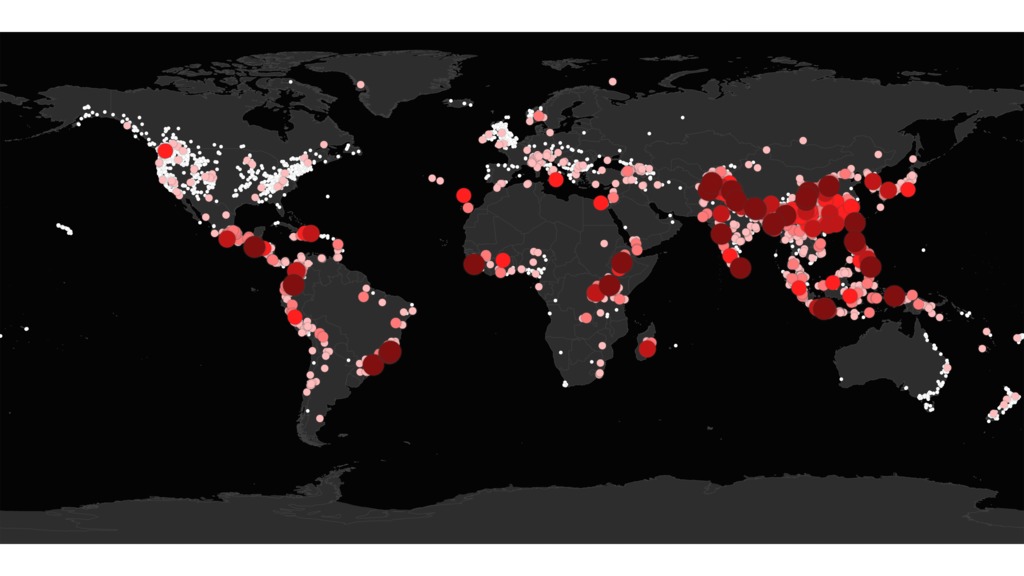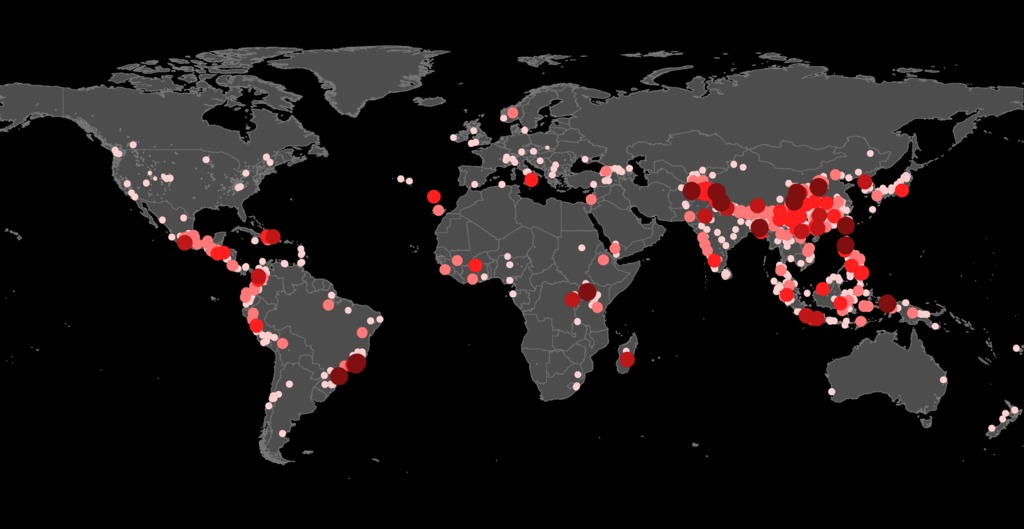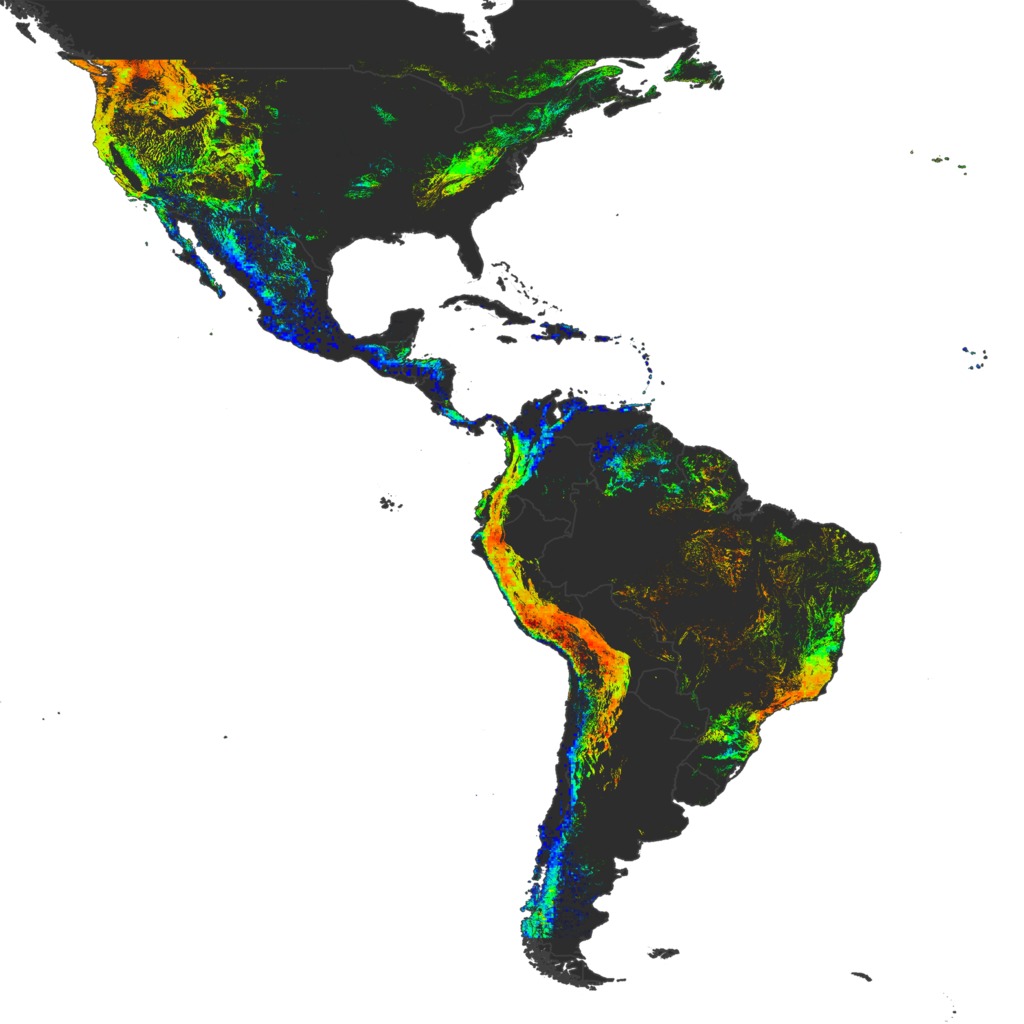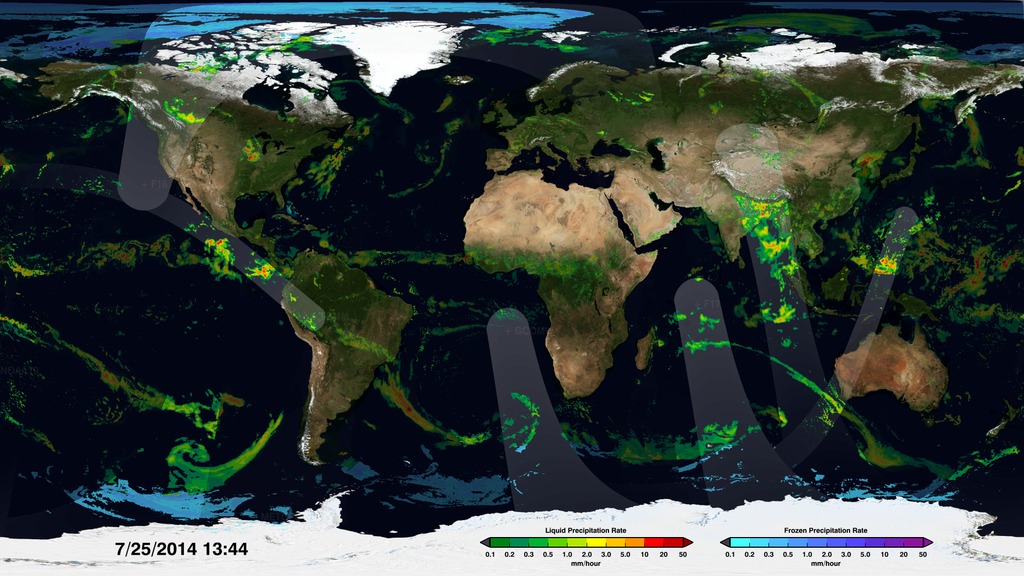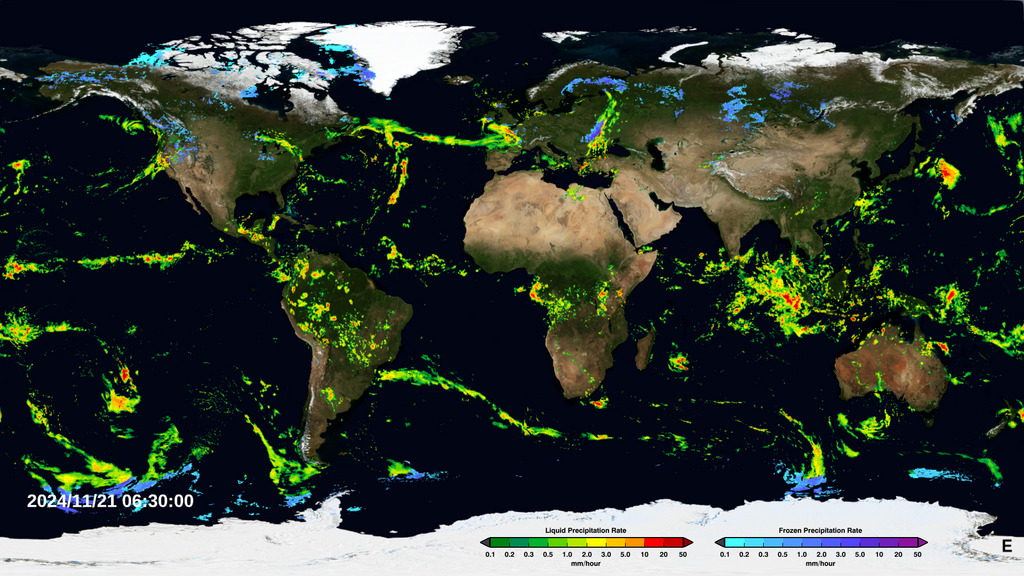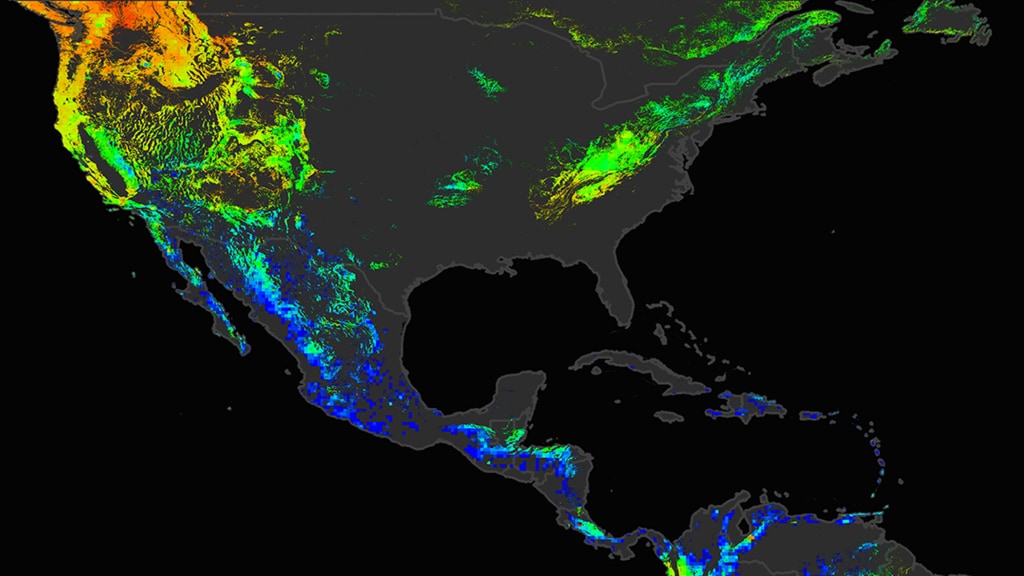New NASA Model Finds Landslide Threats in Near Real-Time During Heavy Rains
A new model has been developed to look at how potential landslide activity is changing around the world. A global Landslide Hazard Assessment model for Situational Awareness (LHASA) has been developed to provide an indication of where and when landslides may be likely around the world every 30 minutes. This model uses surface susceptibility (including slope, vegetation, road networks, geology, and forest cover loss) and satellite rainfall data from the Global Precipitation Measurement (GPM) mission to provide moderate to high “nowcasts.” This visualization shows the landslide nowcast results leveraging nearly two decades of Tropical Rainfall Measurement Mission (TRMM) rainfall over 2001-2016 to identify a landslide climatology by month at a 1 km grid cell. The average nowcast values by month highlight the key landslide hotspots, such as the Southeast Asia during the monsoon season in June through August and the U.S. Pacific Northwest in December and January.
Overlaid with these nowcasts values are a Global Landslide Catalog(GLC) that was developed with the goal of identifying rainfall-triggered landslide events around the world, regardless of size, impact, or location. The GLC considers all types of mass movements triggered by rainfall, which have been reported in the media, disaster databases, scientific reports, or other sources. The visualization shows the distribution of landslides each month based on the estimated number of fatalities the event caused. The GLC has been compiled since 2007 at NASA's Goddard Space Flight Center and contains over 11,000 reports and growing. A new project called the Community the Cooperative Open Online Landslide Repository, or COOLR, provides the opportunity for the community to view landslide reports and contribute their own. The goal of the COOLR project is to create the largest global public online landslide catalog available and open to for anyone everyone to share, download, and analyze landslide information. More information on this system is available at: https://landslides.nasa.gov.
Landslides occur when an environmental trigger like an extreme rain event, often a severe storm or hurricane, and gravity's downward pull sets soil and rock in motion. Conditions beneath the surface are often unstable already, so the heavy rains act as the last straw that causes mud, rocks, or debris- or all combined- to move rapidly down mountains and hillsides. Unfortunately, people and property are often swept up in these unexpected mass movements. Landslides can also be caused by earthquakes, surface freezing and thawing, ice melt, the collapse of groundwater reservoirs, volcanic eruptions, and erosion at the base of a slope from the flow of river or ocean water. But torrential rains most commonly activate landslides.
For more information: https://www.nasa.gov/feature/goddard/2018/new-from-nasa-tracking-landslide-hazards-new-nasa-model-finds-landslide-threats-in-near-real
Watch this video on the NASA Goddard YouTube channel.
Complete transcript available.
Music credit: 'Inducing Waves' by Ben Niblett [PRS], Jon Cotton [PRS] from Killer Tracks.
Data visualization
This version shows the landslide climatology by month followed by a duplicate run of the landslide climatology overlaid with the distribution of landslides each month based on the estimated number of fatalities the event caused.
Data visualization
This version shows only the landslide climatology (no overlaid fatalities) in order to show seasonality. This version loops two times.
Data visualization
This zoomed in version shows the landslide climatology by month of North, Central and South America followed by a duplicate run of the landslide climatology overlaid with the distribution of landslides each month based on the estimated number of fatalities the event caused.
Data visualization
This zoomed in version shows the landslide climatology by month of Southeast Asia followed by a duplicate run of the landslide climatology overlaid with the distribution of landslides each month based on the estimated number of fatalities the event caused.

A GIF optimized for Twitter
This animation shows the potential landslide activity by month averaged over the last 15 years as evaluated by NASA's Landslide Hazard Assessment model for Situational Awareness model.

High-resolution image
A close-up view of the potential landslide activity during July in the Americas as evaluated by NASA's Landslide Hazard Assessment model for Situational Awareness model. Overlaid on top are reported landslide fatalities dating back to 2007.

High-resolution image
A close-up view of the potential landslide activity during July in Southeast Asia as evaluated by NASA's Landslide Hazard Assessment model for Situational Awareness model. Overlaid on top are reported landslide fatalities dating back to 2007.
For More Information
Credits
Please give credit for this item to:
NASA's Goddard Space Flight Center
-
Scientists
- Dalia B Kirschbaum (NASA/GSFC)
- Thomas A. Stanley (USRA)
-
Producers
- Joy Ng (USRA)
- Ryan Fitzgibbons (USRA)
-
Data visualizer
- Helen-Nicole Kostis (USRA)
-
Writer
- Kasha Patel (Wyle Information Systems)
-
Support
- Horace Mitchell (NASA/GSFC)
- Greg Shirah (NASA/GSFC)
-
Technical support
- Aaron E. Lepsch (ADNET Systems, Inc.)
Release date
This page was originally published on Thursday, March 22, 2018.
This page was last updated on Sunday, February 2, 2025 at 12:22 AM EST.

